Themed collection Editor’s Choice – Graeme Day

Construction of isostructural hydrogen-bonded organic frameworks: limitations and possibilities of pore expansion
The library of isostructural porous frameworks enables a systematic survey to optimize the structure and functionality of porous materials.
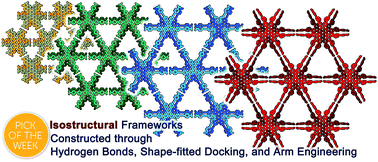
Chem. Sci., 2021,12, 9607-9618
https://doi.org/10.1039/D1SC02690A
Analog quantum simulation of chemical dynamics
Dynamics governing ultrafast chemical reactions can be efficiently simulated using analog quantum simulators composed of a coupled system of qudits and bosonic modes.
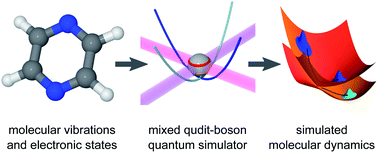
Chem. Sci., 2021,12, 9794-9805
https://doi.org/10.1039/D1SC02142G
Determination of intermediate state structures in the opening pathway of SARS-CoV-2 spike using cryo-electron microscopy
A structural ensemble derived from cryo-electron microscopy reveals a cryptic pocket site in intermediate states along the opening pathway of the SARS-CoV-2 spike protein.
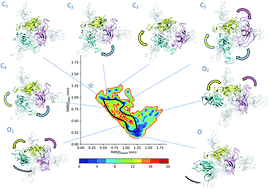
Chem. Sci., 2021,12, 9168-9175
https://doi.org/10.1039/D1SC00244A
Attention-based generative models for de novo molecular design
An implementation of attention within the variational autoencoder framework for continuous representation of molecules. The addition of attention significantly increases model performance for complex tasks such as exploration of novel chemistries.
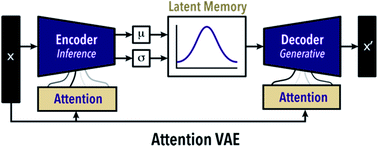
Chem. Sci., 2021,12, 8362-8372
https://doi.org/10.1039/D1SC01050F
The origin of unidirectional charge separation in photosynthetic reaction centers: nonadiabatic quantum dynamics of exciton and charge in pigment–protein complexes
Essential factors leading to unidirectional charge separation in photosynthetic reaction centers are clarified via nonadiabatic quantum dynamics calculations.
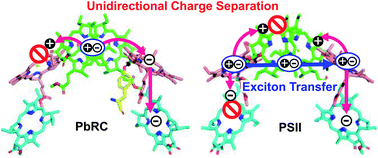
Chem. Sci., 2021,12, 8131-8140
https://doi.org/10.1039/D1SC01497H
Reaction-based machine learning representations for predicting the enantioselectivity of organocatalysts
A machine learning model for enantioselectivity prediction using reaction-based molecular representations.
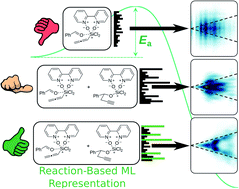
Chem. Sci., 2021,12, 6879-6889
https://doi.org/10.1039/D1SC00482D
The structural changes in the signaling mechanism of bacteriophytochromes in solution revealed by a multiscale computational investigation
A combination of MD simulations and a polarizable QM/MM description of a bacteriophytochrome in solution reveals the changes in the chromophore-binding pocket and in the overall structure of the phytochrome involved in the signaling mechanism.
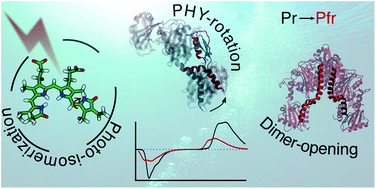
Chem. Sci., 2021,12, 5555-5565
https://doi.org/10.1039/D1SC00186H
Leveraging autocatalytic reactions for chemical domain image classification
Kinetic models of autocatalytic reactions have mathematical forms similar to activation functions used in artificial neural networks. Inspired by these similarities, we use a copper-catalyzed reaction to perform digital image recognition tasks.
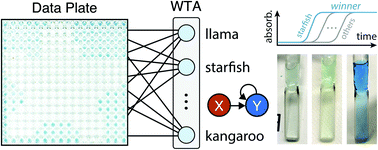
Chem. Sci., 2021,12, 5464-5472
https://doi.org/10.1039/D0SC05860B
Troubleshooting unstable molecules in chemical space
A high-throughput workflow for connectivity preserving geometry optimization minimizes unintended structural rearrangements during quantum chemistry big data generation.
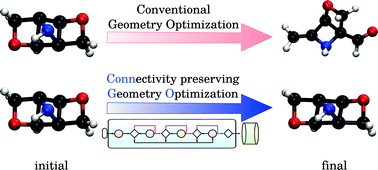
Chem. Sci., 2021,12, 5566-5573
https://doi.org/10.1039/D0SC05591C
Machine learning dielectric screening for the simulation of excited state properties of molecules and materials
Machine learning can circumvent explicit calculation of dielectric response in first principles methods and accelerate simulations of optical properties of complex materials at finite temperature.
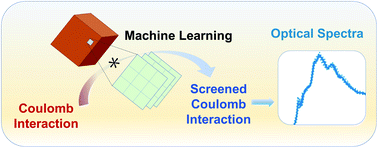
Chem. Sci., 2021,12, 4970-4980
https://doi.org/10.1039/D1SC00503K
A chemically consistent graph architecture for massive reaction networks applied to solid-electrolyte interphase formation
A chemically consistent graph architecture enables autonomous identification of novel solid-electrolyte interphase formation pathways from a massive reaction network.

Chem. Sci., 2021,12, 4931-4939
https://doi.org/10.1039/D0SC05647B
High-resolution mining of the SARS-CoV-2 main protease conformational space: supercomputer-driven unsupervised adaptive sampling
We provide an unsupervised adaptive sampling strategy capable of producing μs-timescale molecular dynamics (MD) simulations of large biosystems using many-body polarizable force fields (PFFs).
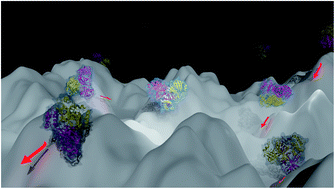
Chem. Sci., 2021,12, 4889-4907
https://doi.org/10.1039/D1SC00145K
Data-efficient machine learning for molecular crystal structure prediction
Using a cluster-based training scheme and a physical baseline, data efficient machine-learning models for crystal structure prediction are developed, enabling accurate structural relaxations of molecular crystals with unprecedented efficiency.
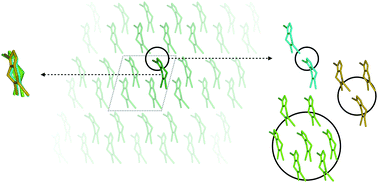
Chem. Sci., 2021,12, 4536-4546
https://doi.org/10.1039/D0SC05765G
Retrosynthetic accessibility score (RAscore) – rapid machine learned synthesizability classification from AI driven retrosynthetic planning
The retrosynthetic accessibility score (RAscore) is based on AI driven retrosynthetic planning, and is useful for rapid scoring of synthetic feasability and pre-screening of large datasets of virtual/generated molecules.
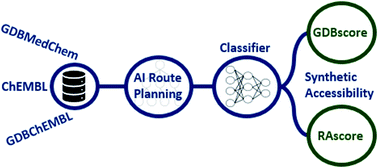
Chem. Sci., 2021,12, 3339-3349
https://doi.org/10.1039/D0SC05401A
How natural materials remove heavy metals from water: mechanistic insights from molecular dynamics simulations
We investigate via atomistic simulations the capture of lead ions from water by hemicellulose – as representative of the polysaccharides that are common components of vegetables and fruit peels – and the reverse process.
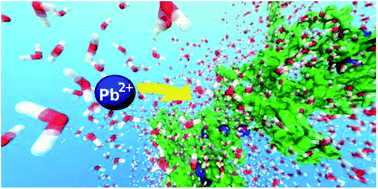
Chem. Sci., 2021,12, 2979-2985
https://doi.org/10.1039/D0SC06204A
Computational strategy for intrinsically disordered protein ligand design leads to the discovery of p53 transactivation domain I binding compounds that activate the p53 pathway
A hierarchical computational strategy for IDP drug virtual screening (IDPDVS) was proposed and successfully applied to identify compounds that bind p53 TAD1 and restore wild-type p53 function in cancer cells.
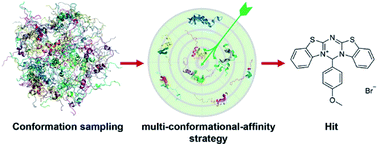
Chem. Sci., 2021,12, 3004-3016
https://doi.org/10.1039/D0SC04670A
Born–Oppenheimer approximation in optical cavities: from success to breakdown
The coupling of a molecule and a cavity induces nonadiabaticity in the molecule which makes the description of its dynamics complicated.
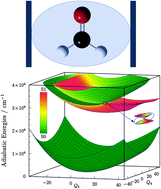
Chem. Sci., 2021,12, 1251-1258
https://doi.org/10.1039/D0SC05164K
When are two hydrogen bonds better than one? Accurate first-principles models explain the balance of hydrogen bond donors and acceptors found in proteins
Correlated wavefunction theory predicts and high-resolution crystal structure analysis confirms the important, stabilizing effect of simultaneous hydrogen bond donor and acceptor interactions in proteins.
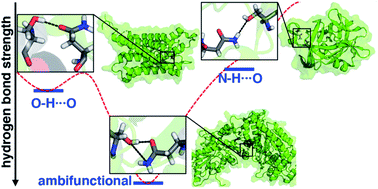
Chem. Sci., 2021,12, 1147-1162
https://doi.org/10.1039/D0SC05084A
Machine learning meets mechanistic modelling for accurate prediction of experimental activation energies
Hybrid reactivity models, combining mechanistic calculations and machine learning with descriptors, are used to predict barriers for nucleophilic aromatic substitution.
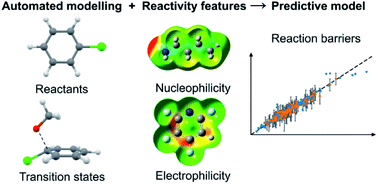
Chem. Sci., 2021,12, 1163-1175
https://doi.org/10.1039/D0SC04896H
Discovery of cryptic allosteric sites using reversed allosteric communication by a combined computational and experimental strategy
Using reversed allosteric communication, we performed MD simulations, MSMs, and mutagenesis experiments, to discover allosteric sites. It reproduced the known allosteric site for MDL-801 on Sirt6 and uncovered a novel cryptic allosteric Pocket X.
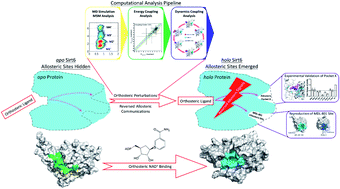
Chem. Sci., 2021,12, 464-476
https://doi.org/10.1039/D0SC05131D
About this collection
In 2021, Chemical Science welcomed Professor Graeme Day to the journal as an Associate Editor, handling papers in the area of theoretical and computational chemistry. Graeme has looked back over Chemical Science papers published over the past couple of years and has selected some outstanding articles that he would like to share, featuring examples highlighting recent trends in machine learning, simulations of chemical dynamics, and models for molecular design. We hope you enjoy reading through this selection.